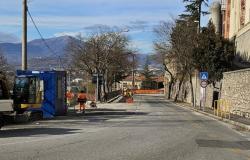On 2 June 1946, Puglia chose the Monarchy and Manfredonia the Republic
(by Maria Teresa Valente ✍️)
It was a Sunday, just like today, that 2 June 1946 when around 25 million Italians and, for the first time, Italian women went to the polls for the first electoral confrontation that divided Italy. REPUBLIC OR MONARCHY? In Manfredonia, albeit by a handful of votes, the Republic prevailed.
The Italians who voted for the Republic were 12,717,923, while for the Monarchy 10,719,923 (the invalid votes were 1,498,136). The results highlighted a clear division in the country: the North and the regions of central Italy voted for the Republic; the South confirmed its loyalty to the monarchical institution, especially in Puglia with all the provincial capitals in favor of the crown.
In Manfredonia there were 12,256 voters out of 13,713, or 89.38% of those entitled to vote, and for the first time there were also women. The valid votes in the city for the Institutional Referendum were 11,881, of which 6,001 in favor of the Republic, while 5,880 for the Monarchy. It was therefore with a gap of only 121 votes that Manfredonia found itself in line with what the majority of Italians, equal to 54.3%, had chosen.
On the same day there was also a vote to elect the members of the Constituent Assembly which was to give Italy a text with a new Constitution.
In Manfredonia the three most voted parties were:
Christian Democracy with 2,851 votes (25.26%), Italian Communist Party with 2,673 votes (23.68%) and Everyman Front with 2,464 votes (21.83%).
The Everyman’s Front party intrigued me and so I carried out further research. It was created in 1944 by a journalist, a certain Guglielmo Giannini, who made political satire. The Everyman’s Front appealed to the discontented (who numbered in the millions after the war) and conceived a state that was not of a political nature, but simply administrative, without any ideological basis. According to Giannini, to govern: “all it takes is a good accountant who takes office on January 1st and leaves on December 31st. And he cannot be re-elected for any reason.”
A party that today ignites a déjà vu and which at the time, after an initial exploit, was short-lived, probably crushed by the indifference that it itself had created.
Since that June 2, 1946, many years have passed, many men and, politically speaking, few women. What remains of the great emotions of that time, of the importance of being able to express one’s vote to try to improve one’s nation, is perhaps little felt today. But that Sunday in 1946, when Italy called, Manfredonia shouted loudly present, making a mature and not at all obvious choice.
Maria Teresa Valente






